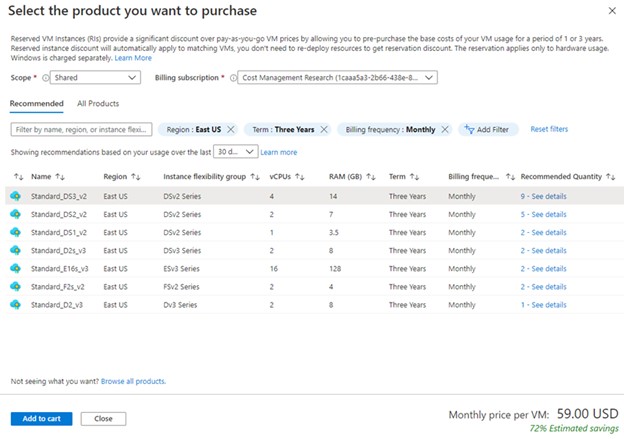What is Azure Cost Optimization?
Azure cost optimization lets you reduce cloud spending by matching the infrastructure you use in the Azure cloud to your actual requirements. The better the match, the lower your cloud costs. To take a simple example, if you are running virtual machines (VMs) on Azure and they are not utilized at all, this represents a mismatch between your cloud infrastructure and business needs. By shutting down the VMs, you can conserve costs.

Image Source: Pixabay
The Azure cloud gives you fine-grained control over the resources you use. You can adjust infrastructure on an ongoing basis, either manually or automatically. It is also possible to transition workloads to different services or infrastructure options that might suit them better or reduce your costs.
Despite this tremendous flexibility, public clouds like Azure also present challenges. You’ll need to carefully manage your resource consumption to ensure cloud resources are effectively used. This requires a deep understanding of how your business uses the cloud, Azure pricing models, and the performance characteristics of workloads running on the cloud.
Azure Cost Optimization Best Practices
Estimate the Cost of Your Solution
Azure provides several tools to help you estimate the costs of deploying your solution. You can use this information to create an estimated budget and use it as a benchmark to compare against the actual cost of the deployed solution.
Azure pricing calculator
Azure pricing calculators let you estimate the costs of your solution. You can generate costs by combining several Azure services to determine whether you have chosen the most cost-effective options for your scenario.
Azure Migrate
This service assesses existing workloads running on-premises and suggests suitable alternatives offered by Azure. It typically involves analyzing on-premises machines to determine the feasibility of migration to the Azure cloud. If migration is deemed feasible, Azure Migrate recommends Azure virtual machines (VMs) to maximize performance and generate a cost estimate.
Cost Analysis
Cost analysis is a Cost Management feature that provides in-depth insight into Azure costs, including visualized views displaying current trends and forecasts. You can use this feature to investigate anomalies by performing routine checks to locate trends and outliers. The feature also helps perform invoice reconciliation and check internal chargebacks.
Optimize Azure SQL Database Costs
Azure SQL Database, the managed version of Microsoft SQL Server, can be a significant part of your Azure costs. There are multiple performance tiers, which provide a certain number of database transaction units (DTUs) or virtual cores (vCores).
Here is how to optimize Azure SQL Database depending on your workload:
- Databases with steady loads—optimize by selecting the most appropriate performance tier.
- Databases with unpredictable loads—use SQL Database elastic pools. This lets you manage and scale a few databases that have unpredictable usage. You can manage multiple databases on one Azure SQL Database instance, sharing a specific set of resources. If one database requires less resources at a given time, they can be reused by the other databases.
Use Azure Reservations
Azure Reservations offers up to 72% off the market price in return for upfront payment on supported services and resources, such as VMs. However, you must commit to using these resources for a duration of one or three years. The service is available to customers with Cloud Solution Providers, pay-as-you-go, and Enterprise Agreement subscriptions.
The image below shows an example of estimated savings on VMs—72% off the pay-as-you-go price in return for a three-year commitment.

Image Source: Azure
Use Spot Instances for Low-priority Workloads
Spot Instances offer spare capacity at a discounted rate of up to 90% off the pay-as-you-go price. However, once Azure requires this capacity, the infrastructure evicts spot VMs, which means you cannot continue using this instance. Ideally, you should use spot instances for workloads that can suffer interruptions. For example, large compute workloads, development/test environments, and batch processing jobs.
Apply Tags to Identify Cost Owners
Azure lets you define and apply tags to resources to organize your billing data. You can use tags to manage costs associated with specific Azure resources. For example, you can categorize costs by departments like marketing, finance, human resources (HR) or by environments like production or testing and then identify groups that generate overhead. These insights can help you adjust your spending to optimize costs and budgets.
Conclusion
In this article, I explained the basics of Azure cost optimization and covered several ways you can optimize your cloud costs:
- Estimate costs—before running workloads in Azure, use the Azure Calculators, Azure Migrate, or Cost Analysis to estimate the cost of your scenario.
- Optimize Azure SQL Database Costs—leverage performance tiers or elastic pools to make more efficient use of resources.
- Use Azure Reservations—prepay for resources you use continuously on Azure and get discounts of up to 72%.
- Use spot instances—run lower-priority workloads or workloads that can be interrupted on lower-cost spot instances.
- Apply tags to identify cost owners—use tags to clearly define who in the organization is responsible for which cloud resources.
I hope this will be useful as you improve the utilization and efficiency of your Azure cloud deployment.


